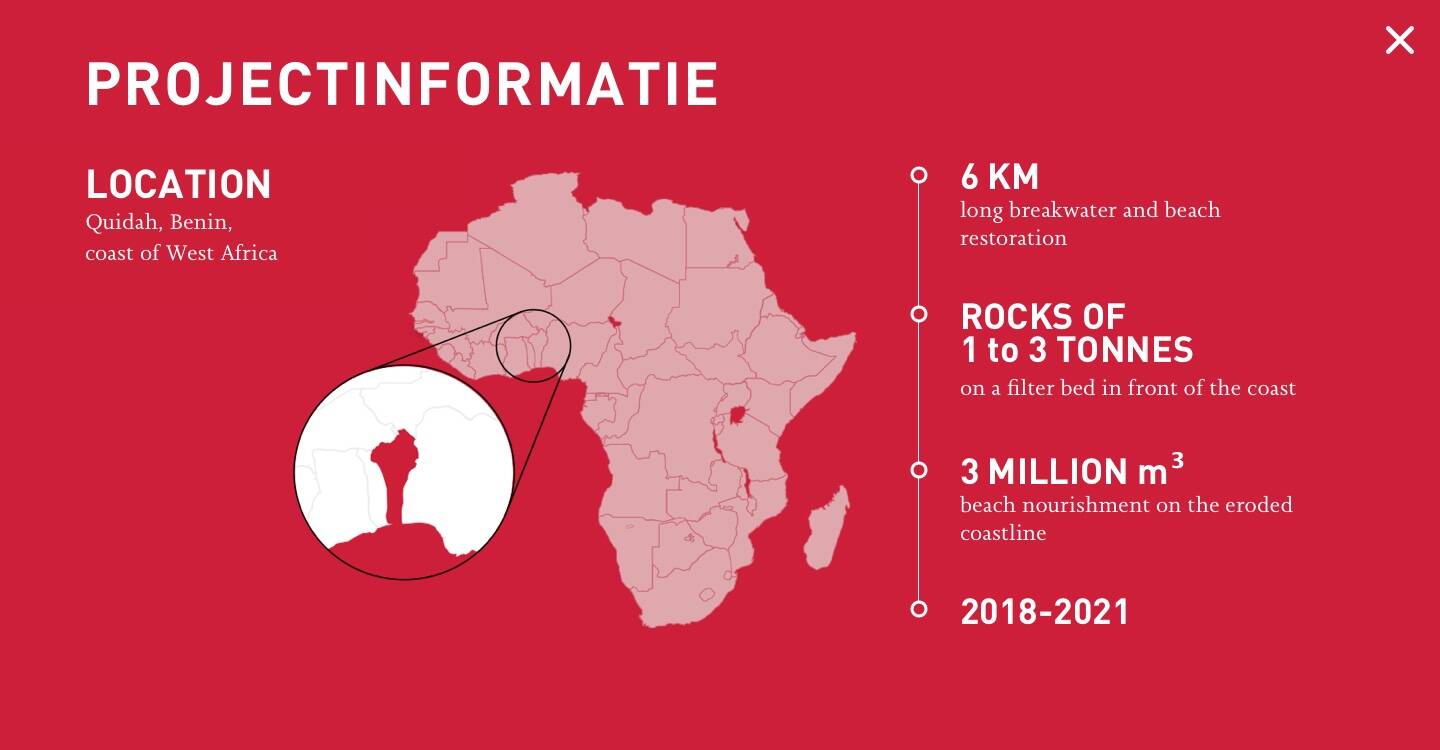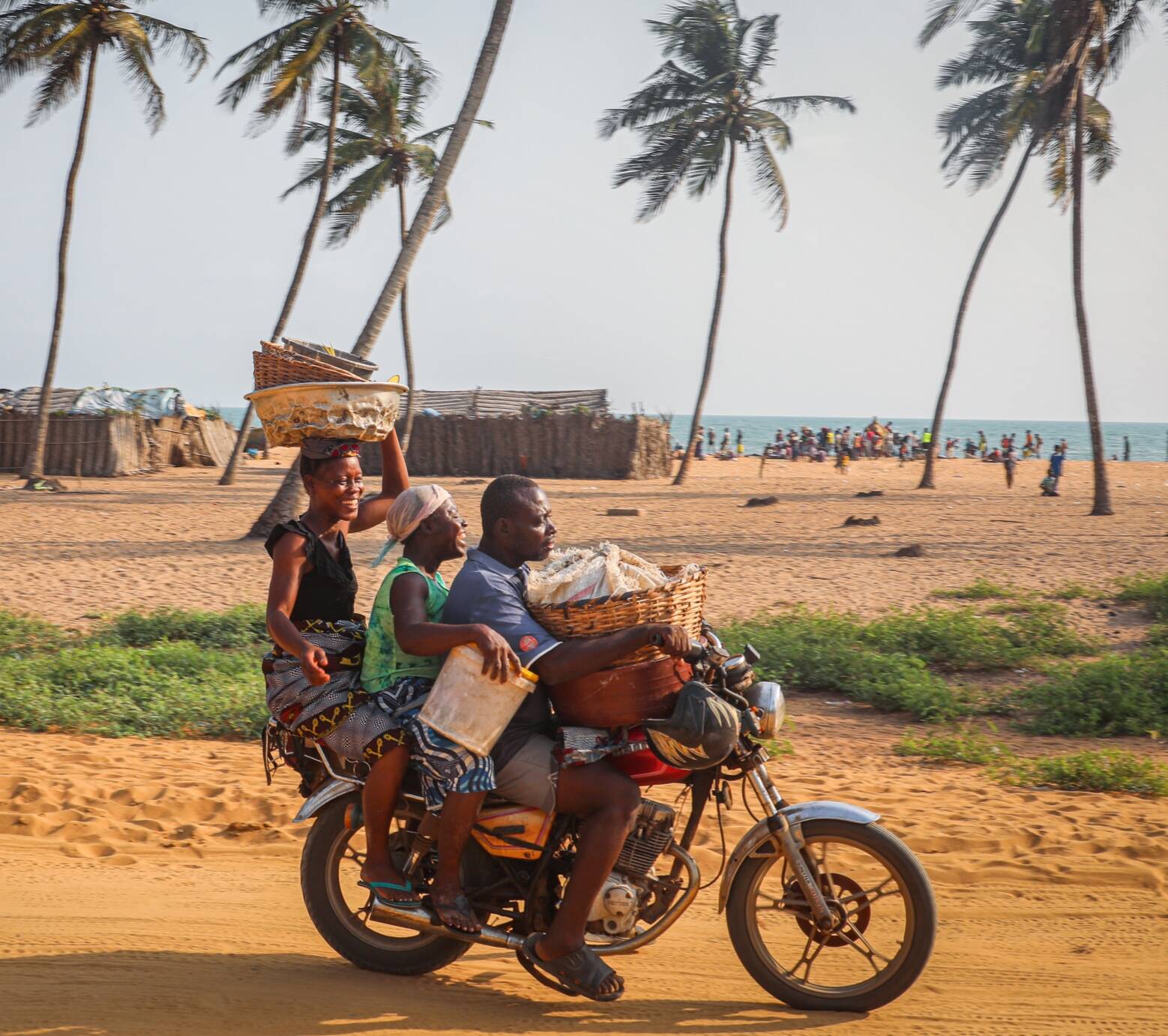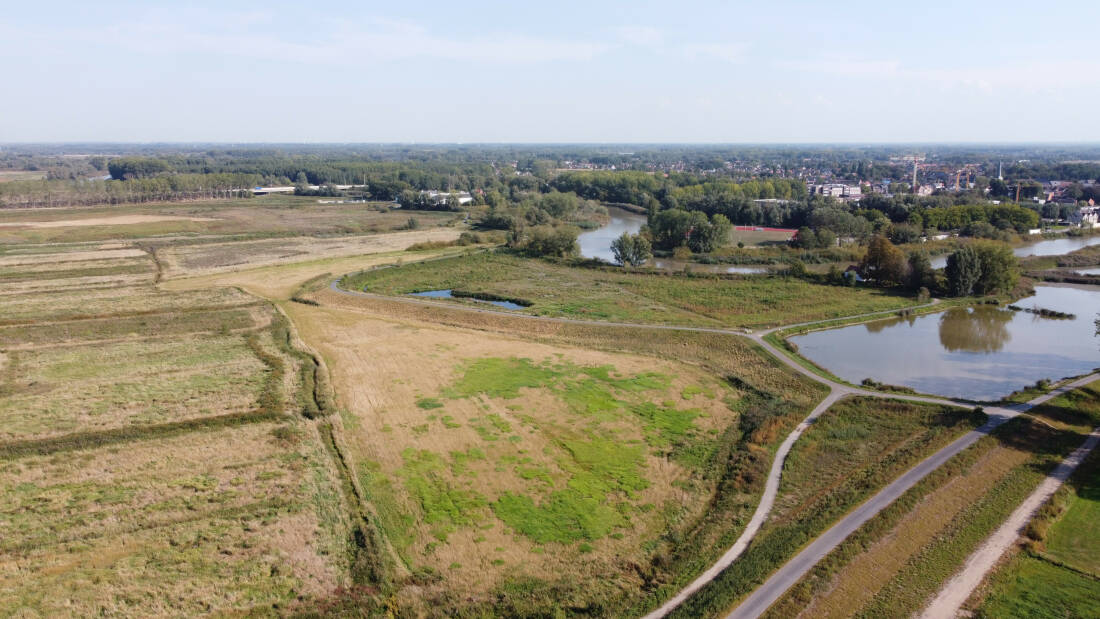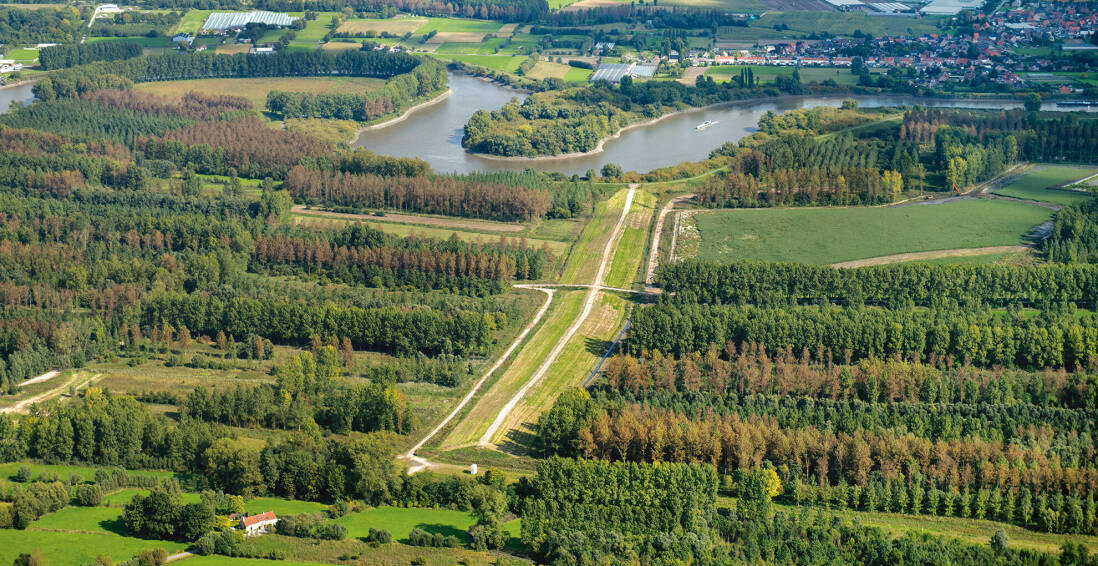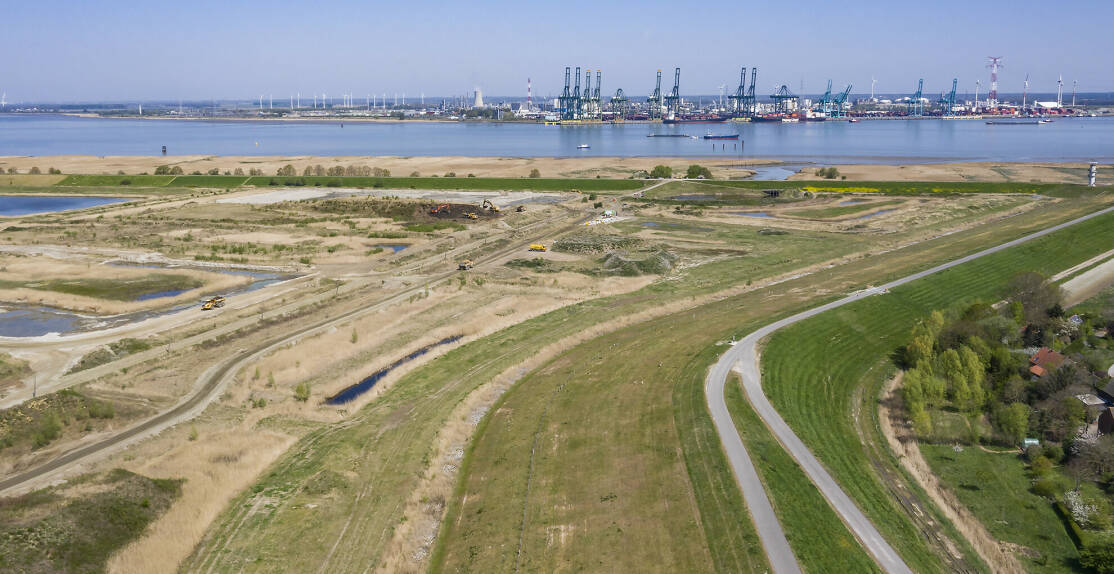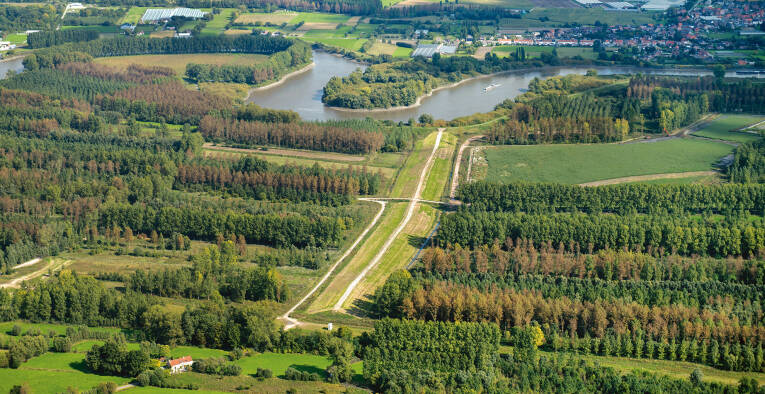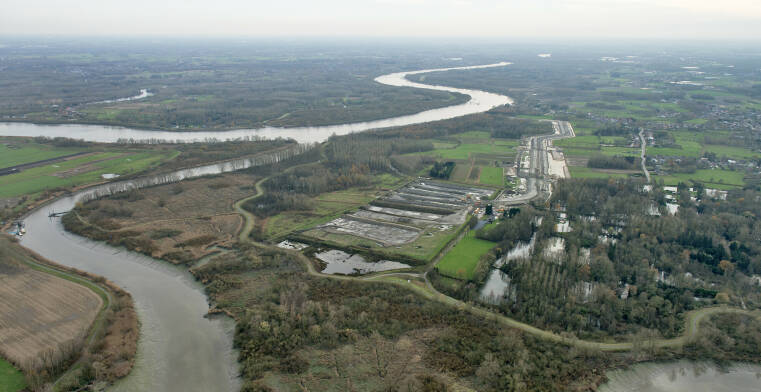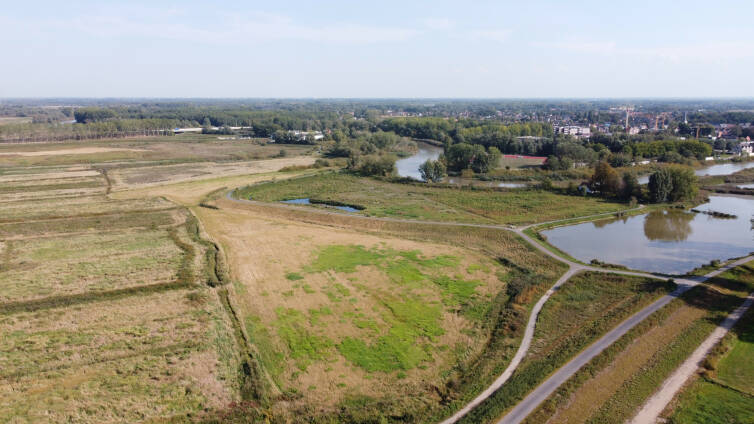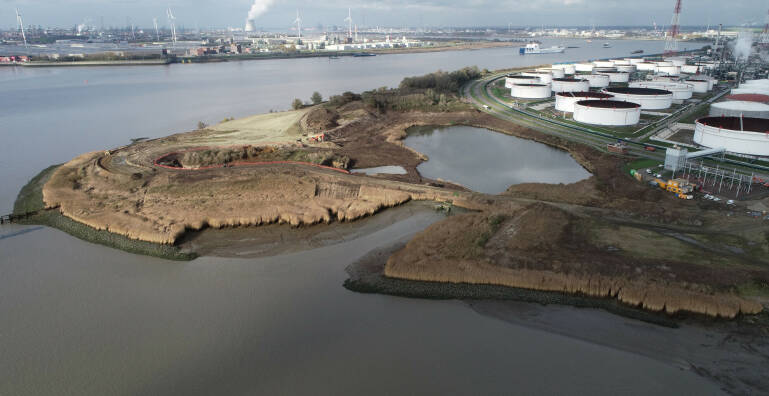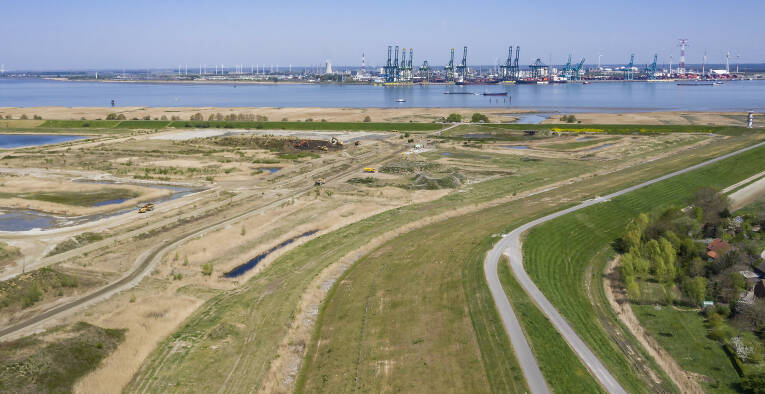
The outcome of supranational gatherings like the recent UN Climate Change Conference (COP26) in Glasgow might be ‘too little, too late’ for the most vulnerable areas. A glimpse at current figures on climate change shows the severity of the situation:
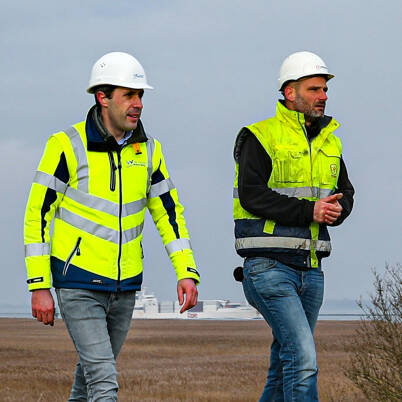
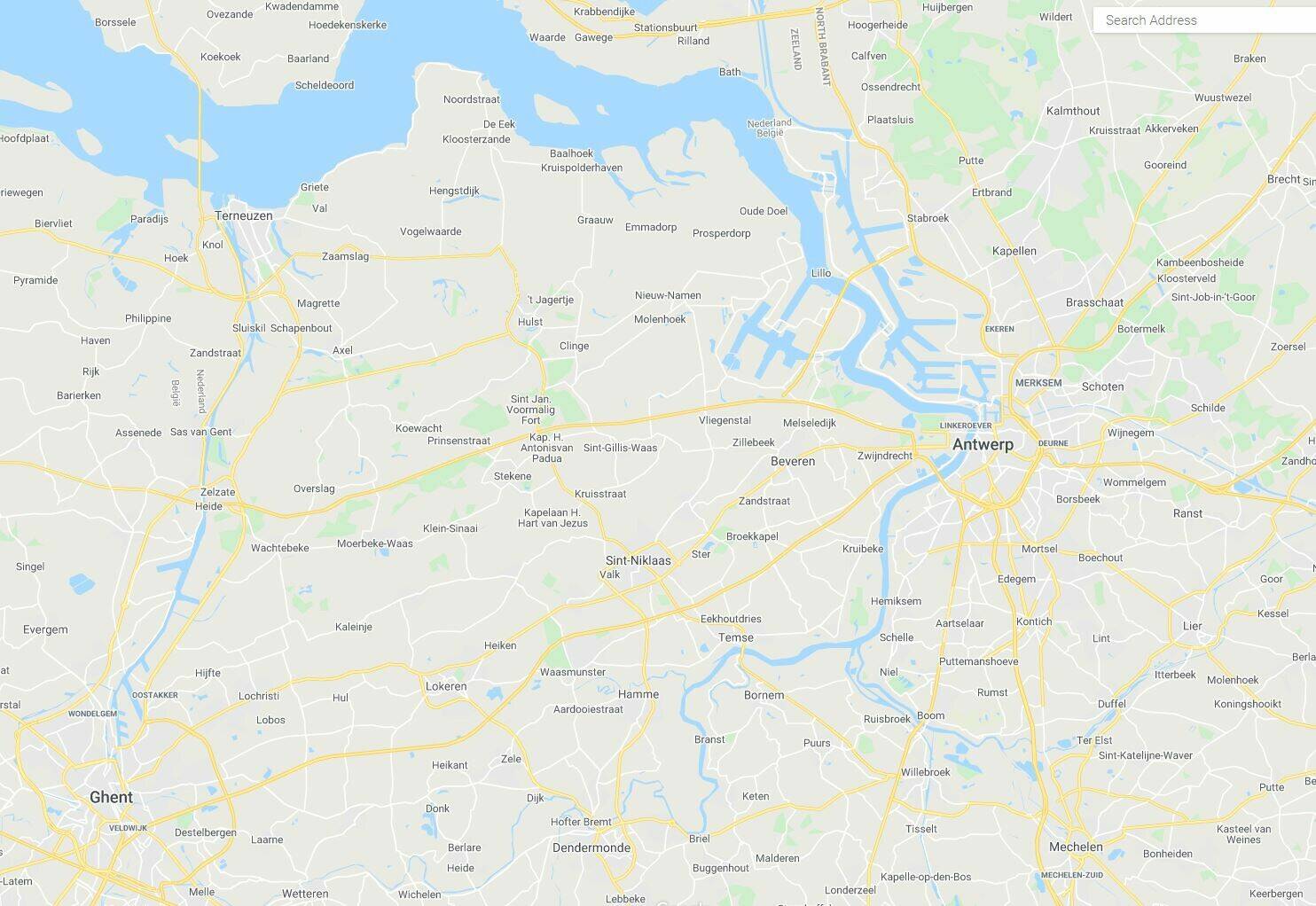
Hans Quaeyhaegens: Project Engineer Flemish Waterways
Geert Vanwesenbeeck: Project Manager Hedwige-Prosperpolder
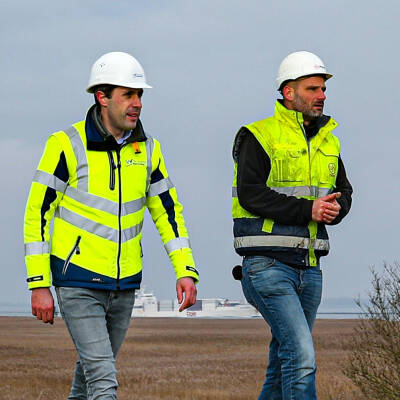
Take a look on site at the Hedwige-Prosperpolder on the Belgian-Dutch border, where we are reinforcing the dyke and creating a tidal flooding area of 465 hectares.


Wondering how we help to realise the Sigma plan?
Land under pressure


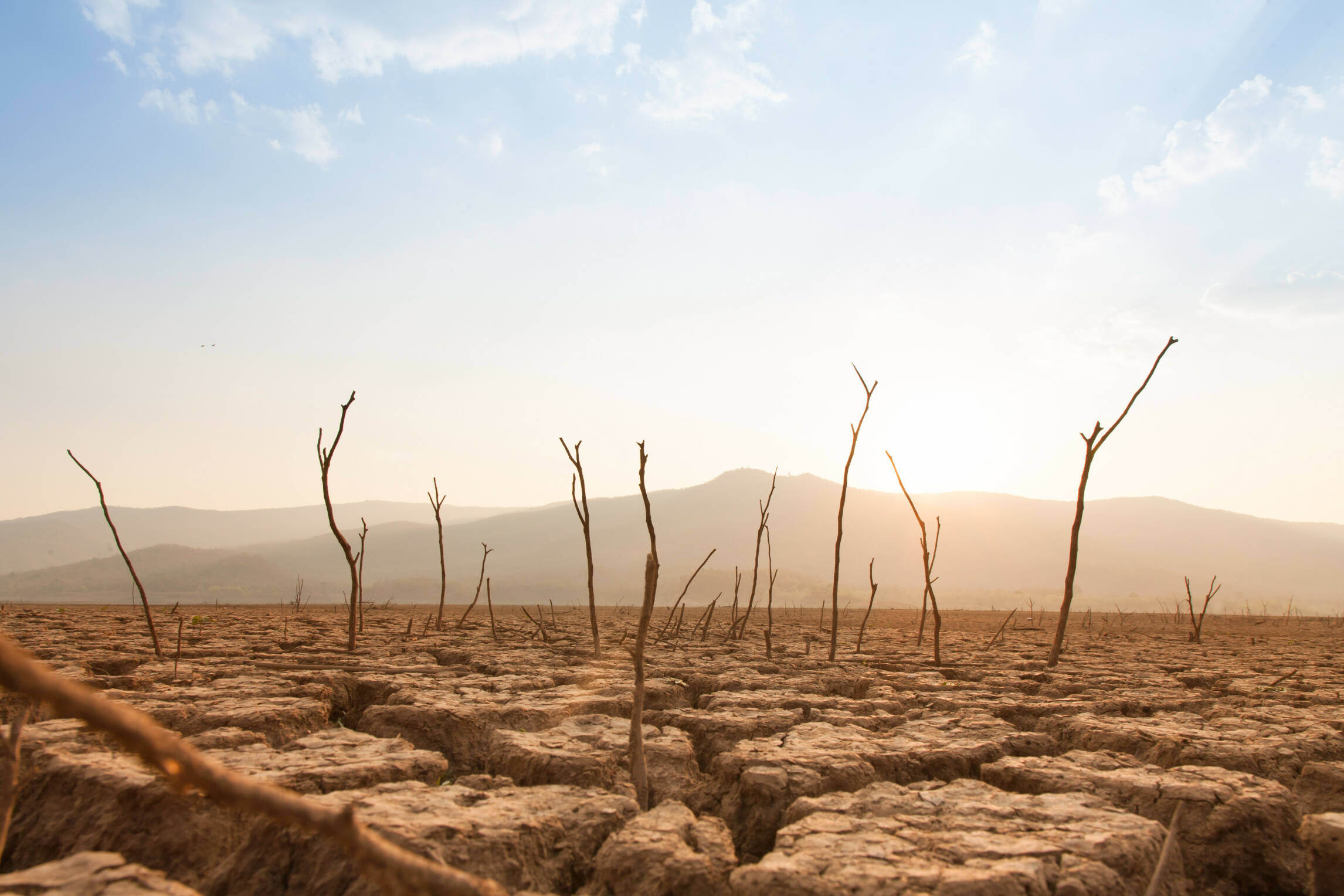
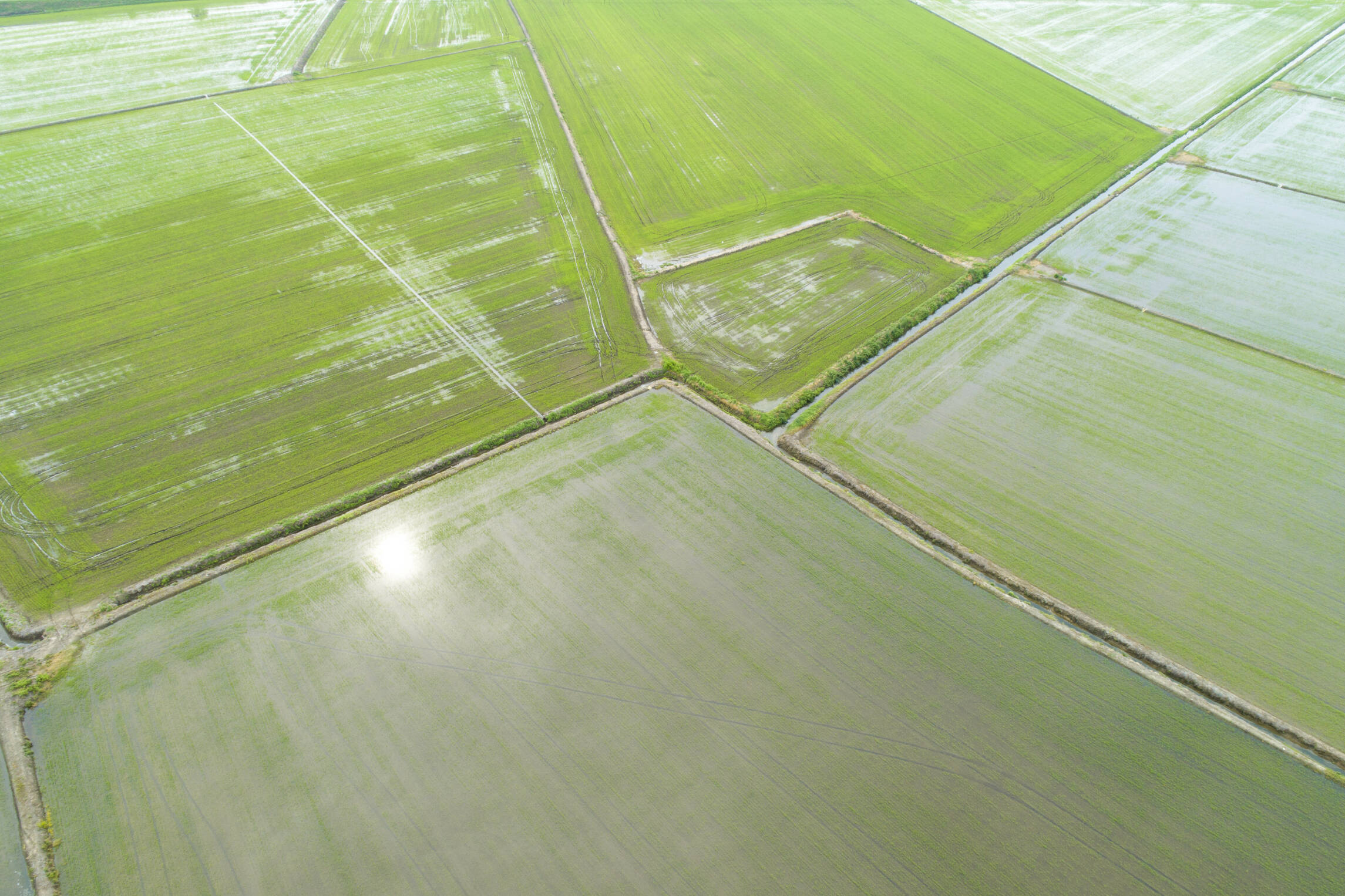
A growing number of countries are facing extreme weather conditions and natural disasters, such as flooding, wildfires, droughts, hurricanes or even total destruction. The consequence? Massive material, human and environmental losses as well as climate migration. All over the world, governments are searching for solutions to keep their heads above water. Sometimes quite literally: in Flanders, the wide-scale Sigma plan is aimed at protecting the hinterland from flooding. How? By giving land back to nature.
Today, climate change is already forcing people to migrate to higher grounds. Their low-lying coastal areas and islands are frequently flooded and have to fight for survival. If we do nothing, that number will only increase.
The Sigma plan was set up after the devastating flood of the Scheldt in 1976? A storm surge at sea led to the inundation of large parts of the Scheldt region. Many people lost their homes and two people even lost their lives. In July 2021, the southern part of Belgium was hit by an unprecedented flood, taking 41 lives and destroying complete villages; a wake-up call and a confirmation that the ground-breaking works of the Sigma plan are still necessary.
i
Read more about how we protect the coastline using nature itself.
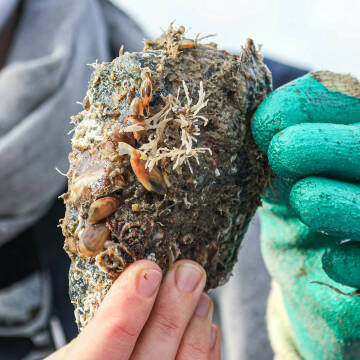
i
Read more about how we develop a new cost-competitive technology for offshore floating solar plants.
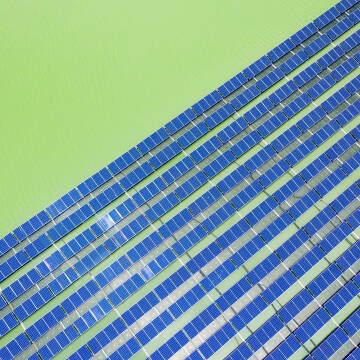
The Sigma plan creates ecologically valuable flood plains protected by river dykes. But these dykes also need protection, for example by ecologically valuable river banks. To make this happen, the partnership for innovative collaboration Blue Cluster initiated the project Bankbusters. The aim of the project is to provide the right conditions at the foot of the dyke for vegetation to grow, making the river banks resistant to erosion.
How we do this? By using dredged sediments and biobased and biodegradable materials to create structures in the marine environment. They give living organisms the opportunity to settle and to improve the environment. As a long-term partner of the Blue Cluster, Jan De Nul has participated in several milestone projects.
Restoring eroded intertidal areas

in the past 100 years
burned each year

people affected by floods in the past 20 years

people affected by drought each year

Extreme weather conditions can cause rivers to reach dangerously high levels and even to flood. That’s why the Flemish government started the Sigma plan in 1977 to protect Flanders against flooding of the Scheldt and its tributaries. By creating higher dykes and a chain of natural flooding areas, the river land will be able to buffer the extra water. In other words: we give land back to nature, allowing rivers to flow and flood.
By 2030, about 260 kilometres of river land will be ready to withstand the impact of climate change. An ambitious project, with Jan De Nul as one of the main contributors.
Giving land back to nature

burned each year

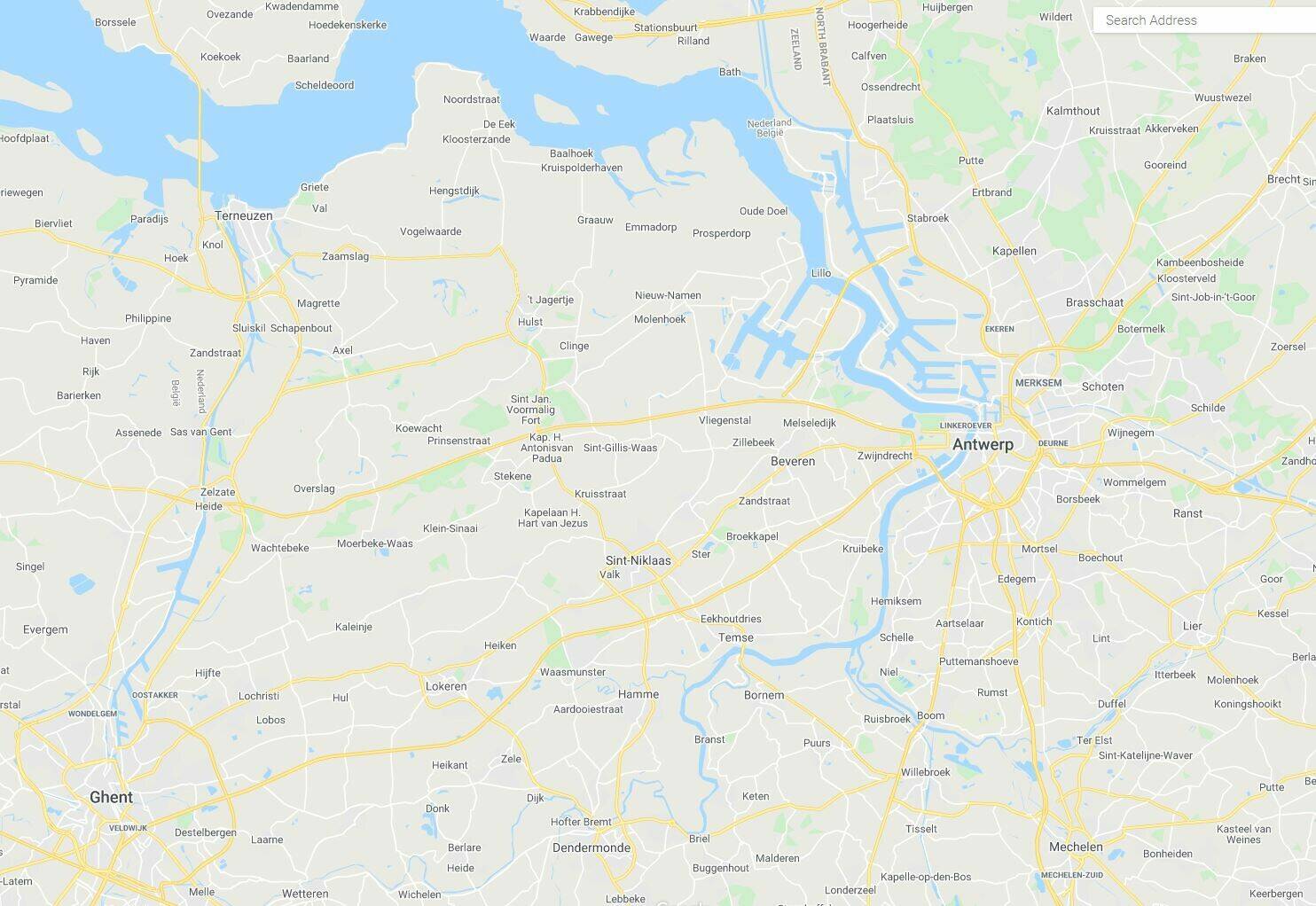
Extreme weather conditions can cause rivers to reach dangerously high levels and even to flood. That’s why the Flemish government started the Sigma plan in 1977 to protect Flanders against flooding of the Scheldt and its tributaries. By creating higher dykes and a chain of natural flooding areas, the river land will be able to buffer the extra water. In other words: we give land back to nature, allowing rivers to flow and flood.
By 2030, about 260 kilometres of river land will be ready to withstand the impact of climate change. An ambitious project, with Jan De Nul as one of the main contributors.
Giving land back to nature
Today, climate change is already forcing people to migrate to higher grounds. Their low-lying coastal areas and islands are frequently flooded and have to fight for survival. If we do nothing, that number will only increase.

in the past 100 years
Land under pressure
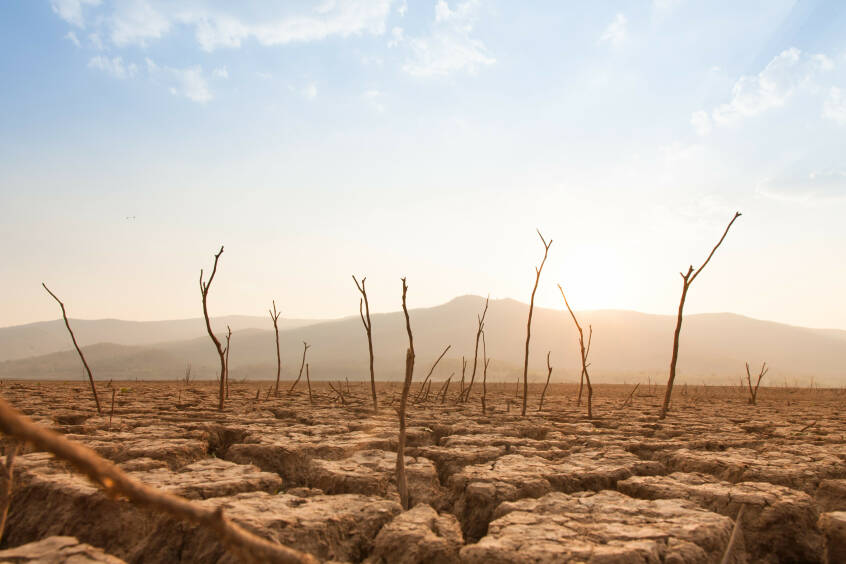
people affected by floods in the past 20 years

The outcome of supranational gatherings like the recent UN Climate Change Conference (COP26) in Glasgow might be ‘too little, too late’ for the most vulnerable areas. A glimpse at current figures on climate change shows the severity of the situation:
people affected by drought each year

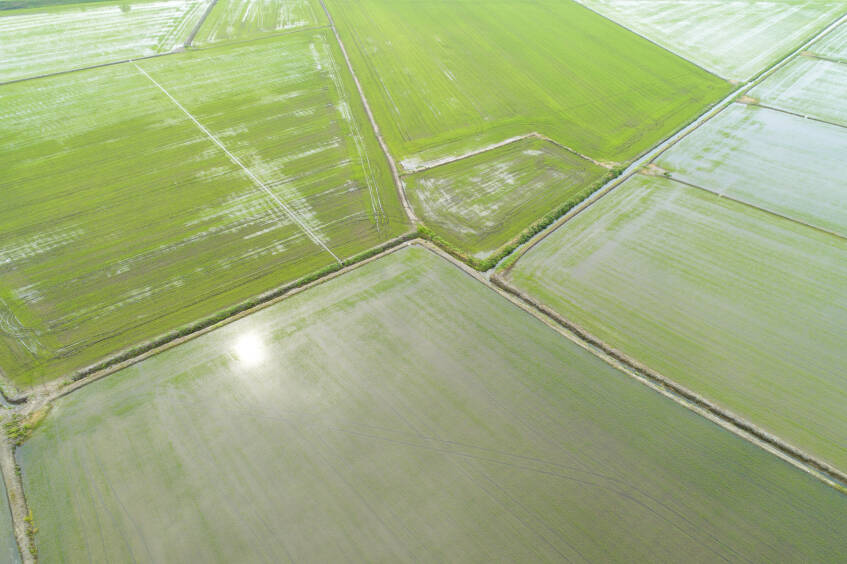

A growing number of countries are facing extreme weather conditions and natural disasters, such as flooding, wildfires, droughts, hurricanes or even total destruction. The consequence? Massive material, human and environmental losses as well as climate migration. All over the world, governments are searching for solutions to keep their heads above water. Sometimes quite literally: in Flanders, the wide-scale Sigma plan is aimed at protecting the hinterland from flooding. How? By giving land back to nature.
The Sigma plan was set up after the devastating flood of the Scheldt in 1976? A storm surge at sea led to the inundation of large parts of the Scheldt region. Many people lost their homes and two people even lost their lives. In July 2021, the southern part of Belgium was hit by an unprecedented flood, taking 41 lives and destroying complete villages; a wake-up call and a confirmation that the ground-breaking works of the Sigma plan are still necessary.
Hans Quaeyhaegens: Project Engineer Flemish Waterways
Geert Vanwesenbeeck: Project Manager Hedwige-Prosperpolder

i
Read more about how we develop a new cost-competitive technology for offshore floating solar plants.

i
Read more about how we protect the coastline using nature itself.
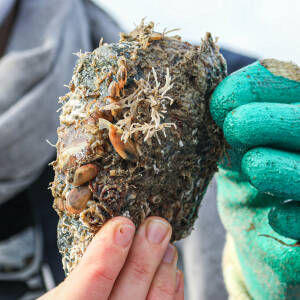
The Sigma plan creates ecologically valuable flood plains protected by river dykes. But these dykes also need protection, for example by ecologically valuable river banks. To make this happen, the partnership for innovative collaboration Blue Cluster initiated the project Bankbusters. The aim of the project is to provide the right conditions at the foot of the dyke for vegetation to grow, making the river banks resistant to erosion.
How we do this? By using dredged sediments and biobased and biodegradable materials to create structures in the marine environment. They give living organisms the opportunity to settle and to improve the environment. As a long-term partner of the Blue Cluster, Jan De Nul has participated in several milestone projects.
Restoring eroded intertidal areas

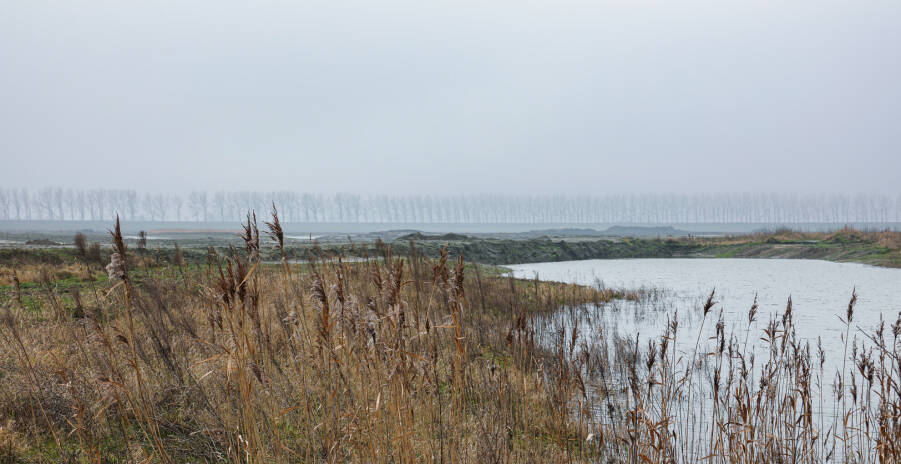

Take a look on site at the Hedwige-Prosperpolder on the Belgian-Dutch border, where we are reinforcing the dyke and creating a tidal flooding area of 465 hectares.
Wondering how we help to realise the Sigma plan?



